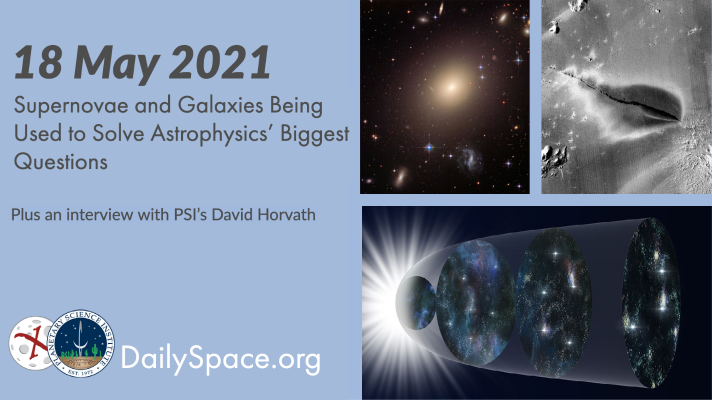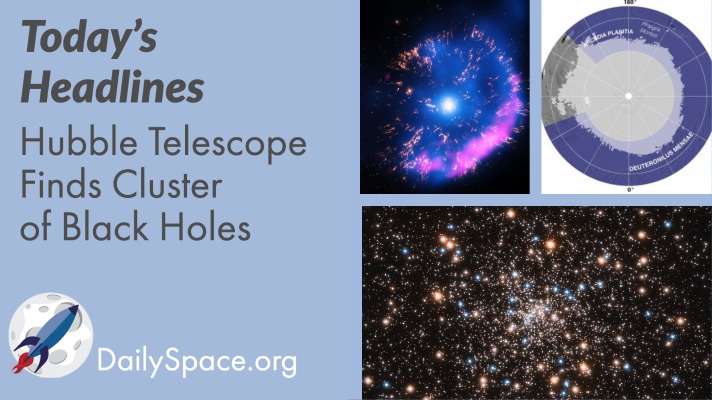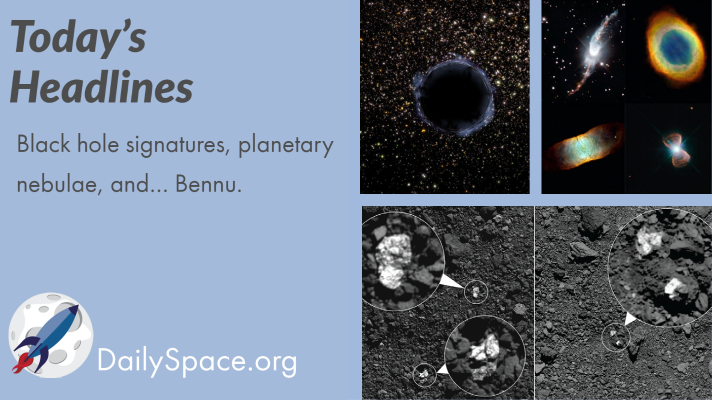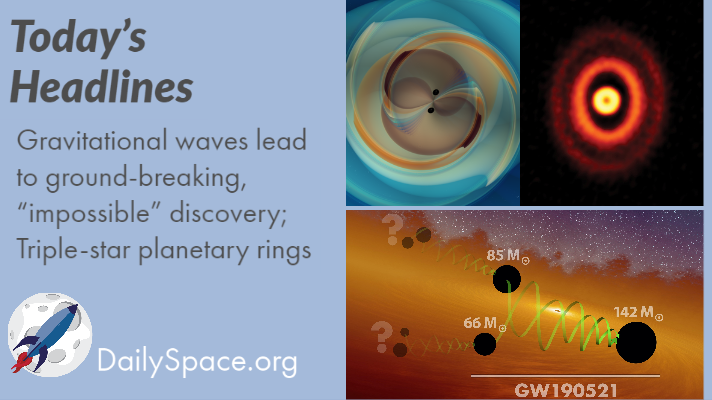
Jun 26, 2021 | Black Holes (Stellar), Cosmology, Daily Space, Earth, Review, Science, Sky Watching, Stars, Supermassive Black Holes, Supernovae Remnants
The fossilized teeth and bones of baby dinosaurs found in northern Alaska may indicate that dinosaurs didn’t just summer in the Arctic but nested and raised their young there. Plus, the cosmic dawn, a cosmic hand, black holes, and preserving core samples for the future of science.

May 19, 2021 | Black Holes (Stellar), Daily Space, Dark Matter, Galaxies, Gemini North, Guest Interview, Mars, Neptune, Physics, Stars, Supermassive Black Holes, Uranus
Two new studies are attempting to solve a couple of big puzzles in astrophysics: Is the Hubble constant actually constant? And why do galaxies have flat rotation curves? Plus, a young star’s circumstellar disk, the search for stellar-mass black holes, magnesium in the deep waters of Neptune and Uranus, and an interview with PSI scientist David Horvath regarding possibly active volcanism on Mars.

May 14, 2021 | Black Holes (Stellar), Brown Dwarf, Daily Space, Earth, Gemini North, Jupiter, Mars 2020, Perseverance, Sky Watching, Stars
A tiny black hole, only three solar masses, has been found inside the Milky Way in the constellation Monoceros. One of the smallest black holes ever found, it is also the closest one to Earth. Plus, Perseverance, Gaia, a brown dwarf, new images of Jupiter, seismic monitoring from space, and this week’s What’s Up.

Feb 22, 2021 | Black Holes (Stellar), Daily Space, Exoplanets, Galaxies, Guest Interview, Mars, Milky Way, Our Solar System, Supernovae, White Dwarfs
While searching for an intermediate-mass black hole, scientists instead found a cluster of smaller black holes in the globular cluster NGC 6397. Plus, supernovae, meteorites, and an interview about mapping water ice on Mars with guests Gareth Morgan and Than Putzig from the Planetary Science Institute.

Sep 23, 2020 | Asteroids, Black Holes (Stellar), Daily Space, JAXA, OSIRIS-REx, Planetary Nebulae
Astrophysicists have finally figured out how to tell neutron stars apart from black holes by finding the signature of the event horizon. Another team discovered that planetary nebulae likely get their unique shapes due to binary systems. And we present some updates on the origin of rocks (and rocks and rocks and pebbles) on Bennu. Same with Ryugu, but we don’t hate Ryugu.

Sep 8, 2020 | Black Holes (Stellar), Cosmology, Daily Space, Exoplanets, Supermassive Black Holes
Join us today as we examine major news coming out last week from institutions analyzing data from the LIGO and Virgo gravitational wave detectors: the largest and farthest collision detected yet has led to the discovery of an “impossible” black hole. Plus a triple-star system has planetary rings and the camera that will be at the heart of the Vera Rubin Observatory takes its first images… of broccoli.








 We record most shows live, on Twitch. Follow us today to get alerts when we go live.
We record most shows live, on Twitch. Follow us today to get alerts when we go live.